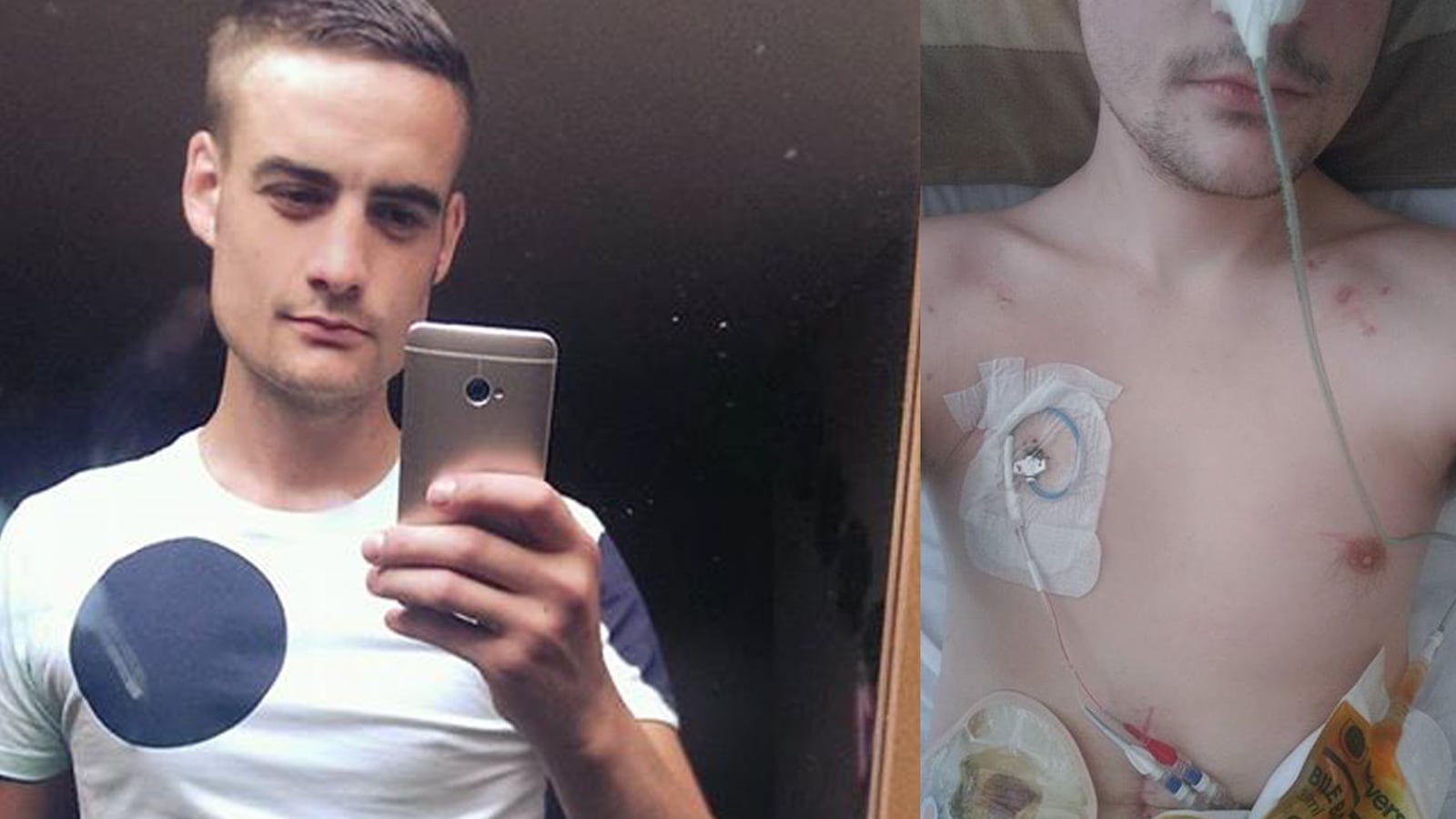"Just because I look normal...that doesn't mean I don't have a major disability." So reads a Facebook post from 24-year-old Ste Walker that has been shared tens of thousands of times and shone a light on the reality of living with an “invisible illness.”
Ste, from Halifax, England, has Crohn's disease and “a number of other quiet ailments,” which have resulted in him needing a range of medical aids from a stomach-draining ryles tube to a stoma bag.
Crohn’s is a chronic inflammation of the intestines, which can result in severe pain, malnutrition, ulceration of the digestive tract, parts of the bowel needing resection or removal, and even cancer. Secondary issues include skin and eye inflammation, mouth and throat ulcers, and arthritis, among others. It is most commonly diagnosed among 15-30-year-olds, and there is no known cure.
Ste was prompted to write on social media after he bumped into an acquaintance at the hospital, who questioned why Ste was still there as he looked “fine.” “It just made me blow my top. To release the anger, I wrote the post," he tells me.
“People are too quick to judge these days,” his Facebook post began. “To look at me I look like any normal guy my age, but that's because I want you to view me like that...look a bit closer though, or ask me questions, and you will soon realize that I have a major illness.”
Ste goes on to explain the grueling treatments he is undergoing that do not get seen: the Hickman line from his heart to his chest, feeding him both nutrition and medication as his stomach is unable to, the removal of large sections of his bowels, the scar that runs down his chest, marking where he has been operated on three times within two years for life saving surgeries.
Perhaps the most concealed ailment of all is the toll these illnesses have taken on sufferers’ mental states. In the last 18 months, Ste has spent a handful of days here and there amounting to four weeks at home—the rest has been spent in hospital. He hasn't eaten a meal in two years. “There is a mental battle raging inside me all the time,” he shared. “Being away from my family and friends, seeing what my illness does to them has a massive effect on my state of mind.”
There are an estimated 1.6 million Americans with Crohn’s and, like chronic pain, which affects 11 percent of the population, it is a largely hidden disease, with representations of disabilities in the news or popular culture usually reserved for more noticeable afflictions. But as Ste highlights, “invisible illnesses need to be seen. So much more needs to be done, and so much more awareness needs to be raised.”
Though there have been other instances of what Crohn’s sufferers deal with going viral—last year, a number of women began posting photos of themselves in bikinis, proudly displaying their stoma bags—it remains an illness that is widely misunderstood. “The next time someone says to me: ‘well you look perfectly fine, why are you using that disabled toilet, or parking in that disabled spot, you’re not disabled…’ just stop and think maybe I just want to be fine or to feel normal, you don't know what I go through on a daily basis,” he says.
“You don't know what goes on inside…so stop and think before you speak, think about the struggle I've gone through just to get out of bed and get dressed and try to look 'normal.’’’
Ste’s status has been liked some 63,000 times and more than 20,000 have shared it at the time of publishing, demonstrating, perhaps, that people are finally ready to acknowledge a debilitating illness that has long been overlooked.






